Baja Fairy Duster: Unique and Red
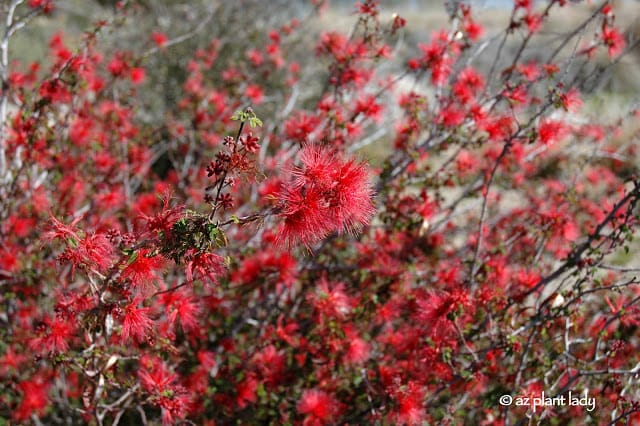
Baja Fairy Duster is Hummingbird Food in the Native Garden
Baja fairy duster (Calliandra californica) is a must-have for the desert garden. There is so much to love about this shrub.
My favorite attribute is that it flowers off and on all year. Its red flowers are shaped like miniature feather dusters. Also, this plant attracts hummingbirds, is low-maintenance, drought tolerant and great by swimming pools because of its low litter.
Baja fairy duster has a vibrant red flower, which is often a color missing in the desert plant palette. The majority of flowering occurs spring through fall, but some flowering can occur in areas that experience mild winters.
It is native to Baja California, Mexico and is also called red fairy duster by some. It is evergreen to 20 degrees F. During some unusually cold winters when temperatures dropped into the high teens, I have had some killed to the ground, but they quickly grew back from their roots.
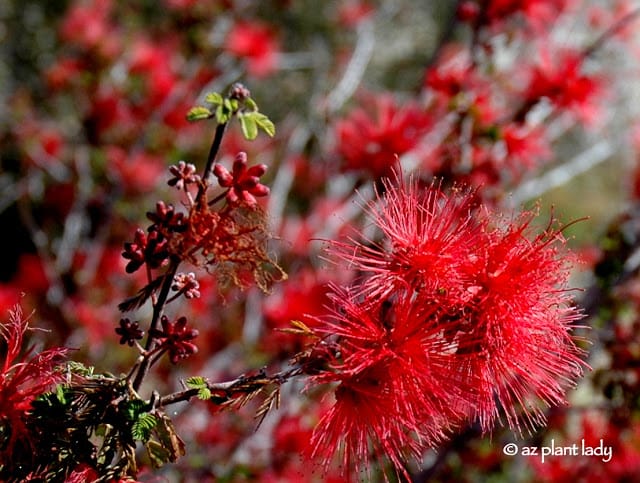
Landscape Uses for the Red Blooming Shrub
This shrub grows to approximately 4 – 5 ft. High and wide, depending on how much you prune it, so allow plenty of room for it to develop.
It makes a lovely screening shrub, either in front of a wall or blocking pool equipment, etc. It also serves as a colorful background shrub for smaller perennials such as damianita, blackfoot daisy, Parry’s penstemon, gold or purple lantana and desert marigold.
Baja fairy duster can take full sun and reflected heat but can also grow in light shade. It is not particular about soil as long as it is well-drained.
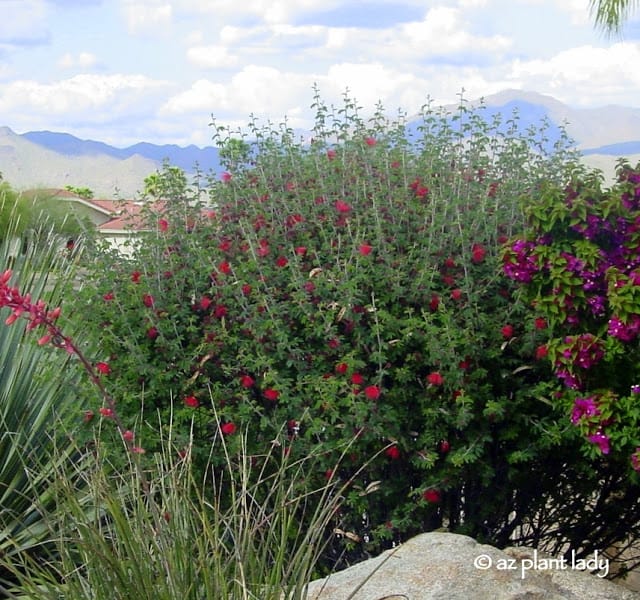
Baja fairy duster in the middle of a desert landscape, flanked by desert spoon to the left and ‘Torch Glow’ bougainvillea to the right. Red yucca is in the foreground.
Baja Fairy Duster Maintenance
As I mentioned before, this is a very low-maintenance shrub. Some people shear this shrub, which I DO NOT recommend. This removes most of the flowers and takes away from the natural shape of this shrub. However, it’s size can be controlled with proper pruning. Pruning should be done in late spring and should be performed with hand-pruners, NOT hedge clippers.
Baja fairy duster does require regular irrigation until established but then is relatively drought-tolerant. However, proper watering is needed for it to look its best and flower regularly, which is what I do.
Other than adding compost to the planting hole, no other amendments or fertilizer is needed. Most native desert plants have been adapted to growing in our nutrient deficient soils and do best when left alone in terms of fertilizing. I tell my clients to fertilize only if the plant shows symptoms of a nutrient deficiency.
So, go to your local plant nursery and get some of these beautiful shrubs for your garden. Then, while you sit and enjoy its beauty, you can debate what you love most about it….the beautiful year-round flowers, the hummingbirds it attracts, it’s low-maintenance, or come up with your reasons.

 Noelle Johnson, aka, 'AZ Plant Lady' is a author, horticulturist, and landscape consultant who helps people learn how to create, grow, and maintain beautiful desert gardens that thrive in a hot, dry climate. She does this through her consulting services, her online class Desert Gardening 101, and her monthly membership club, Through the Garden Gate. As she likes to tell desert-dwellers, "Gardening in the desert isn't hard, but it is different."
Noelle Johnson, aka, 'AZ Plant Lady' is a author, horticulturist, and landscape consultant who helps people learn how to create, grow, and maintain beautiful desert gardens that thrive in a hot, dry climate. She does this through her consulting services, her online class Desert Gardening 101, and her monthly membership club, Through the Garden Gate. As she likes to tell desert-dwellers, "Gardening in the desert isn't hard, but it is different."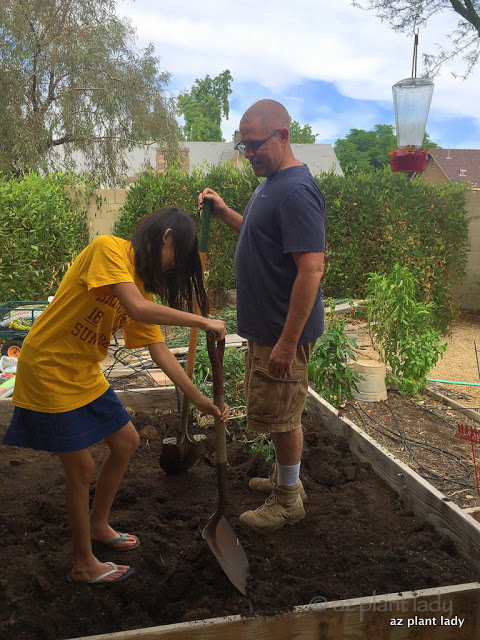
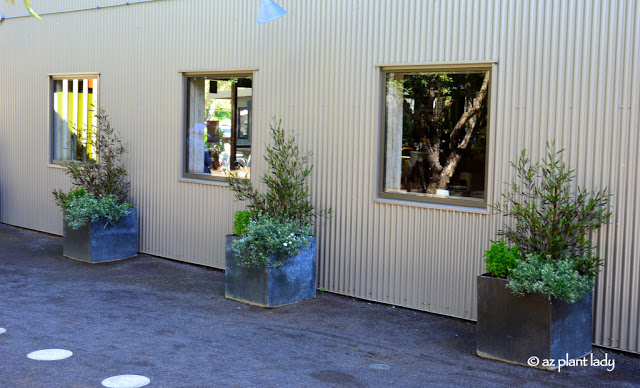
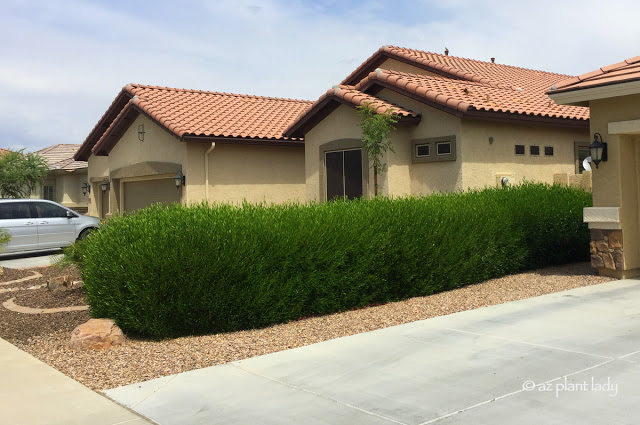
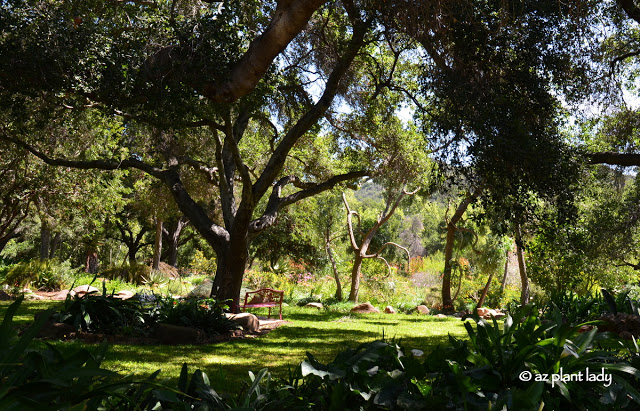
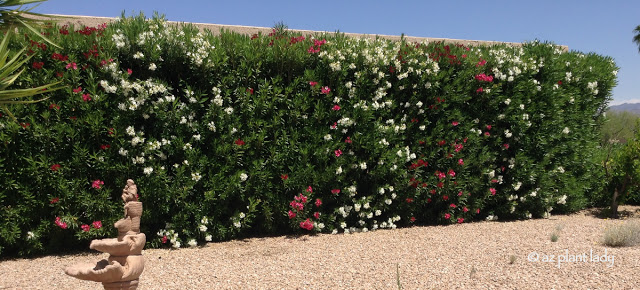
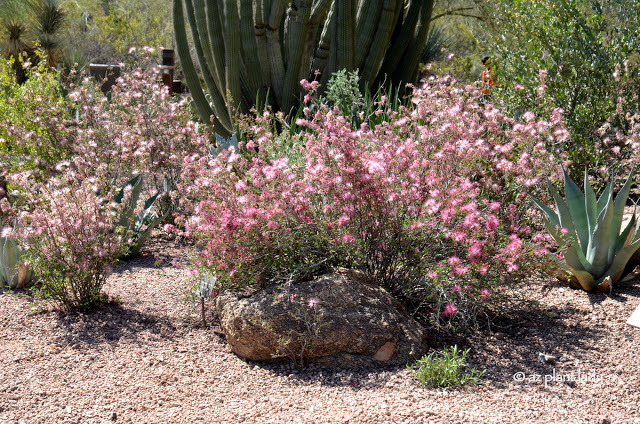








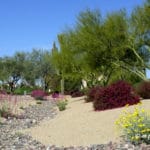

Lovely shrub. Fairy duster is a good name for these red dusting wands of blooms. And so easy to care for.
Noelle, Your photograph with the mountains in the distance is wonderful! What a view! Baja Fairy Duster is delightful with those red flowers. It combines beautifully with the lantana, penstemon and others. I would so plant this if I had the right setting! Penstemons and lantana are really versatile plants. gail
That plant is breathtakingly gorgeous! I must figure out if it would be happy here in central Texas. So beautiful!
Hey Noelle, thanks for bring this little Calliandra to our attention, I'm only familiar with Calliandra haematocephala the red Powder puff and a Pink Calliandra that I don't know the genus of. Nice little plant. Great job.
Scott
This is a pretty shrub. Love the flowers and the fact that the hummers love it make it really nice. I like shrubs that you don't need to prune too much. Very nice.
Thanks for visiting my blog and leaving your sweet comments. You have a nice blog here. I put myself on your follower list so I can keep up.
What a lovely plant and a sweet name. Im sure you would really enjoy the blooms.
What a stunning color for the desert! Your photo with the mountains in the background is beautiful as is the first one of the Fairy duster… especially when blown up. Carol
WOW!! That is one cool looking plant! I don't suppose it would survive up here though…:(
I've never been to AZ or to any desert for that matter..I've learned so much through your blog..it is an amazing place full of life! Thanks for posting!
Jackie at Meadowsweet
Any plant that attracts a hummingbird, has got to be a great one!
Appropriately named and a feast for the eyes.
Rosey
Such a pretty shrub -and your backyard (the desert) is beautiful.
vickie
What an interesting little flower
That is a great shrub! I have never seen it before and I bet it would grow here. Do you have the bottlebrush shrub (Callistemon citrinus)? It kind of reminds me of your Baja Fairy Duster.
The Calliandras are lovely and tough shrubs. Your fairy duster Calliandra is so beautiful in the desert landscape. I think it needs this sort of place to show of its beauty. I have one in a dry place together with other shrubs, but I can see now it is in the wrong place. It seeds easily so I can plant one in a more appropriate place. I have it since 20 years in the same spot and it flowers year in year out. Great flowering plant.
Really nice shrub, I have wanted to learn more about it, but havn't seen any in our local nurseries.
Hello Everyone,
Thank you so very much for your comments. I appreciate them so much!
In response to some of your questions – I will attempt to answer.
I do believe this shrub would do very well in Central Texas.
Amy, we do grow Bottlebrush, and the flower is similar, but smaller and a brighter red.
Susie, I think you can ask your nursery to order it. I know they grow it in the Inland Empire and in the Palm Springs area. You could probably pick it up there if you are driving by.
I so wish that the Fairy Duster would grow here – it is one of my favorite shrubs. Unfortunately, it would not survive our winters. Thanks for all of the information about this plant – you are so thorough as always in your descriptions!
Kathy
It is really pretty and so lively. I like the attributes of this plant and its hardiness. Might see if I can grow in one of the microclimates of my zone 7 garden.
Just the name alone would make me want to plant it! I've never seen this shrub before, I love those red flowers.
I thought this would be a fun plant to try in a container on my roof-deck so I bought some seeds from the Theodore Payne Foundation (the plant itself is never available for sale up here), but never got any germination. Can you recommend a mail-order source? I don't understand why High Country Gardens doesn't sell it.
What a beautiful plant. The shot with the mountains in the background is spectacular.
I'm happy to say that I found this plant for sale at my local nursery just a few days after writing my last comment about how it's never for sale around here!
I was able to buy one that already had flower buds on it; look for it on the blog in a day or two…
I have had this Baja fairy duster in my past two homes now. I live in Arizona where the temps get easily to 110 and above. Mine is wonderfully growing, full sun, blooms constantly, and the hummingbirds love it. Happy growing!
Hello! I currently have two of these plants in my front yard in the low desert of Arizona. We had been using a landscaping company, but I haven’t been pleased with their work. They cut this plant into a shrub (!), and when I complained they claimed that was how these plants were cared for. So I cancelled their service and have been trying to let the plant go back to its natural form, except it seems sparse to me, almost like the middle is hollow and dead. What would you recommend? I have read that it is best to head back in this type of plant, but would thinning help?
Hi Julie,
I recommend waiting until spring and then severely pruning them back. This type of pruning is called renewal pruning as it removes old, woody growth and gives shrubs a chance to start over. Prune back to 1 1/2 feet tall and wide in March and you be amazed at the difference.
This plant is available for purchase by mail order from Almost Eden Plants in Louisiana.
We bought a home in Southern California with one of these in the backyard. It was approximately 10 feet tall with no flowers. Although I grew up in Arizona, I was unfamiliar with this plant. I don’t know how long ago it was planted. We watered it regularly and it started to get a few blooms. Every year, during the drought, it would flower and grew about a foot a year but but was mostly green. This Spring, after all the rain we had and fertilizer, it is now 17′ tall and covered in red flowers. Stunning!
Hi Kathy,
I’m from SoCal originally. Isn’t it amazing at the difference a little rain can make? I hope that it continues so all of CA can emerge from the drought.
It’s the beginning of May and we are moving into a house that has several of these in the front yard, and they’ve all been “cupcaked”! I want to fix them, and am curious to find out if they need to be cut way back, like Texas sage? Or should it be done gradually? I’m tempted to start pruning at the top-center, making an almost bowl-like shape out of them so that they will still look pruned from the street, but sunlight will be able to get down into the plant. I’d trim lightly to let it fill in with leaves, and then trim back the outside of the plant next spring. Will this work?
I just don’t want to kill them! But there is so much dead wood inside that I want to get rid of.
Hi Lori,
Do you know what type of shrubs they are? Many respond well to be pruned severely back, but some do not. Please feel free to email me a photo of your shrubs and I can advise you specifically.
Hello,
I bought 20 seeds from a questionable source. 10 germinated, which got to an inch tall before very slowly dying (leaves turn yellow then the plant folds down and dies, over two months.) Is this caused by something I might be over looking or was the seed stock bad?
I’ve had issues with most of the seed order I received from the same source and am an advanced plant grower.
Thank you,
Hello,
I don’t have much experience growing them from seed. From your description of the yellowing leaves, they may be getting too much water. I would be sure to use a well-drained soil medium and taper off water somewhat once the seed leaves fall and the true leaves begin to appear. I hope this helps!